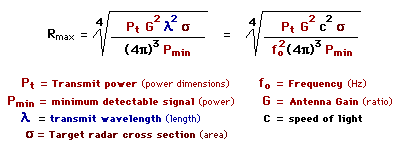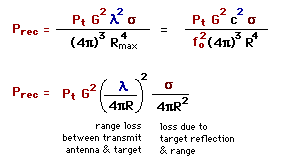DSPs take on next generation automotive audio processing
The availability of low cost DVD player/recorders as well as more affordable home theater systems has enabled millions of consumers to experience high-quality surround-sound audio. Multi-channel surround sound—once thought to be the sole property of a limited number of audio enthusiasts—is now commonplace in the home, and is swiftly becoming more available in automobiles. High-performance, programmable DSP technology has played a key role in the advance of this automotive infotainment market segment and, given current trends, will continue to be essential to future market growth.
As is typical in many consumer markets, surround sound audio equipment manufacturers continually add value to their products by integrating new features and capabilities or by making them easier to use. In the case of home audio products, there is an ever-increasing array of decoders and post-processing formats that must be supported. Additionally, most major IP providers have proposed new algorithms that increase audio channel count and sample rates while leveraging new high speed interfaces such as HDMI and IEEE 1396. Typically these upgraded algorithms are more computationally complex than their predecessors, thus increasing the processing load on the audio processing DSP.
The technology landscape in automotive audio systems is becoming equally complicated. In addition to the required multi-channel audio processing, sophisticated network processing is becoming more prevalent due to the increased bandwidth requirements of the high performance audio and video systems. In particular, the MOST (Media Oriented System Transport) optical network with its associated digital transport copy protection (DTCP) encryption methodology is becoming adopted in many high- and mid-end vehicles. This trend, combined with the fact that automotive audio systems typically have to accommodate a wider variety of input sources (such as AM/FM tuner, CD, DVD, cell phone, and navigation system input) and sample frequencies, applies increased pressure on DSP suppliers to provide higher performance and more highly integrated processors.
Background
With all of the various combinations of multi-channel audio decoder, virtualizer, and post-processing formats, today’s audio processing engines have to be very flexible. A high performance digital signal processor (DSP) is ideal for running the decoders and has the programmability and flexibility to perform the additional functions like automatic room equalization. Whether the signal processing is performed in the DVD or another component, the digital signal processor is the central processing engine of the entire system. With such audio sources as pulse code modulation (PCM), Super Audio Compact Disc (SACD), DVD Audio, Digital Theatre Systems (DTS), audio codec 3 (AC3), advanced audio coding (AAC), and Windows Media Audio (WMA); post processing algorithms such as DPLII, Neo6, Surround EX, ES Matrix, and Bass; and delay and custom post processing modules, the processor must support a myriad of combinations while dynamically detecting changes in the input streams to invoke the correct decoding software.
To improve the user experience, many of today’s A/V receivers include an automatic calibration and equalization feature. Until recently, this audio environmental tuning was a manual process, usually restricted to custom installation system for homes and automobiles. These new algorithms detect the speaker position in a room or car, the shape and size of the listening environment, and the reflective and absorption qualities of the listening area. The system automatically adjusts the sound to optimize the listening experience by changing the speaker frequency characteristic and modeling the response of the audio environment. Many of the features that are adjusted can also be manually set according to the listener's preference. These include independent channel gain, variable crossover frequency, and audio delay adjustment.
The figure below illustrates the development of audio systems as technology progresses. With the increasing number of encoded audio content streams and the demand for higher quality audio, the memory and processing needs of the DSP system create great challenges for the designer. This, coupled with the contradicting need for decreased system cost, has driven DSP design engineers to integrate peripheral devices into the DSP processor. An example is the Analog Devices ADSP-2136X family. With 400Mhz of single instruction stream, multiple data stream (SIMD) based floating-point performance, 6 Mbits of on-chip ROM, 3 Mbits of on-chip RAM, integrated Sony-Philips Digital Interface Format (S/PDIF), hardware sample rate converters, delay line DMA functionality and other audio system specific peripherals, this next-generation family of SHARC devices is advancing audio-specific DSP development.

Digital Media Processing: DSP Algorithms Using C, by Hazarathaiah Malepati, Newnes, 2010, ISBN 978-1-85617-678-1.
This book discusses various algorithms—related to the processing of data, signals, images, speech, audio, and video—that are used in present-day cutting-edge technologies—and the C simulation and implementation techniques to run them in real time on embedded processors.
Digital media processing demands efficient programming in order to optimize functionality. Optimized algorithms with step-by-step directions are difficult to create, but they can make all the difference when developing a new application. This book presents the most recent algorithms available to maximize functionality and efficiency, while simultaneously considering the memory and real time constraints of the working architecture.
This book uses the ADSP-BF5xx series Blackfin processor from Analog Devices as the reference embedded processor, discussing the implementation complexity of all algorithms covered with respect to this amazing general-purpose embedded processor.
Unlike other DSP algorithm books that concentrate mainly on basic operations, such as the Fourier transforms and digital filters, this book covers many algorithms commonly used in media processing and digital communications. For most of them, this book provides full details of flow, implementation complexity, and efficient implementation techniques using ANSI C. The table of contents, outlined below, shows a fuller picture of this book.
Part 1: Data Processing
Part 2: Signal and Image Processing
Part 3: Speech and Audio Processing
Part 4: Video Processing
Part 5: Embedded systems
Appendix A: Blackfin Embedded Processor
Appendix B: Mathematical computations on fixed-point processors
Exercises, References and Index
For more details, or to order a copy, visit:
Audo processing
http://www.eetimes.com/document.asp?doc_id=1272728
http://www.analog.com/en/processors-dsp/sigmadsp/products/index.html
http://www.analog.com/en/processors-dsp/sigmadsp/products/index.html#SigmaDSP_Processors_for_TV
http://www.analog.com/en/audiovideo-products/products/index.html
http://www.analog.com/en/processors-dsp/sigmadsp/products/sigmastudio_algorithms/fca.html
http://cable.tmcnet.com/topics/cable/articles/40550-analog-devices-intros-soundmax-audio-processing-solution-hdtv.htm
http://www.bdti.com/InsideDSP/2012/01/24/Tensilica
http://www.analog.com/library/analogdialogue/archives/44-07/digital_media.html
http://www.analog.com/en/content/srs_uses_sharc/fca.html
http://www.eetimes.com/document.asp?doc_id=1276697
processor
http://www.analog.com/static/imported-files/data_sheets/ADAV4601.pdf
|



![[Note]](http://www.linuxfromscratch.org/blfs/view/svn/images/note.png)